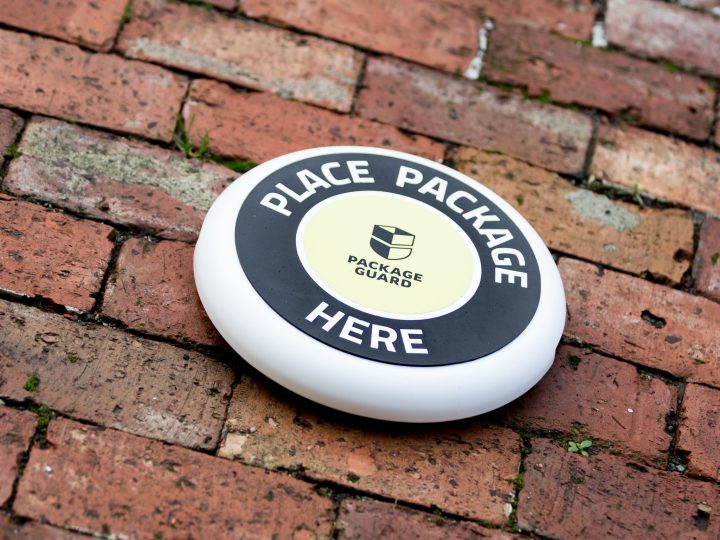
Package Guard is a small alarm, about the size of a Frisbee, that can be placed outside your front door. The device clearly says, “Place Package Here,” so that those delivering items know where to set the packages. Once a delivery has been set on the device, Package Guard’s alarm is armed. If anyone tries to remove the package without entering the necessary passcode in the app, an alarm will sound, much like a car alarm.
For those who have home security cameras, Package Guard can be set to work in conjunction with the system. In this case, the alarm will also take a photograph of the person who snatched the package. The image can then be automatically shared with the police or on Facebook to warn neighbors.
The idea behind Package Guard comes from founder Michael Grabham, who was himself once the victim of a porch pirate. He had been expecting a delivery of coats to be distributed to the homeless over the holiday season, but the package was stolen from his front porch.
“With an increasing number of people ordering items delivered to their homes, I wanted to create a simple solution that would solve the problem of protecting a delivery when no one is home,” said Package Guard founder Michael Grabham in a press release.
You can now pre-order the Package Guard and keep your deliveries safe for $69. This represents $20 off the retail price of $89, so if you’re interested in ensuring that your packages stay on your porch (and out of the hands of strangers), this may be a good investment to make.
Update: The Package Guard is now available for pre-order on the company website.
Editors' Recommendations
- Pawport brings security (and smarts) to your existing pet door
- Peloton Guide lets you monitor your form while strength training
- The smart home hacking scene in Scream is possible, but you’re probably OK
- Everything you need to know about Amazon Virtual Security Guard
- Amazon’s new Astro robot can keep an eye on your home while you’re away


